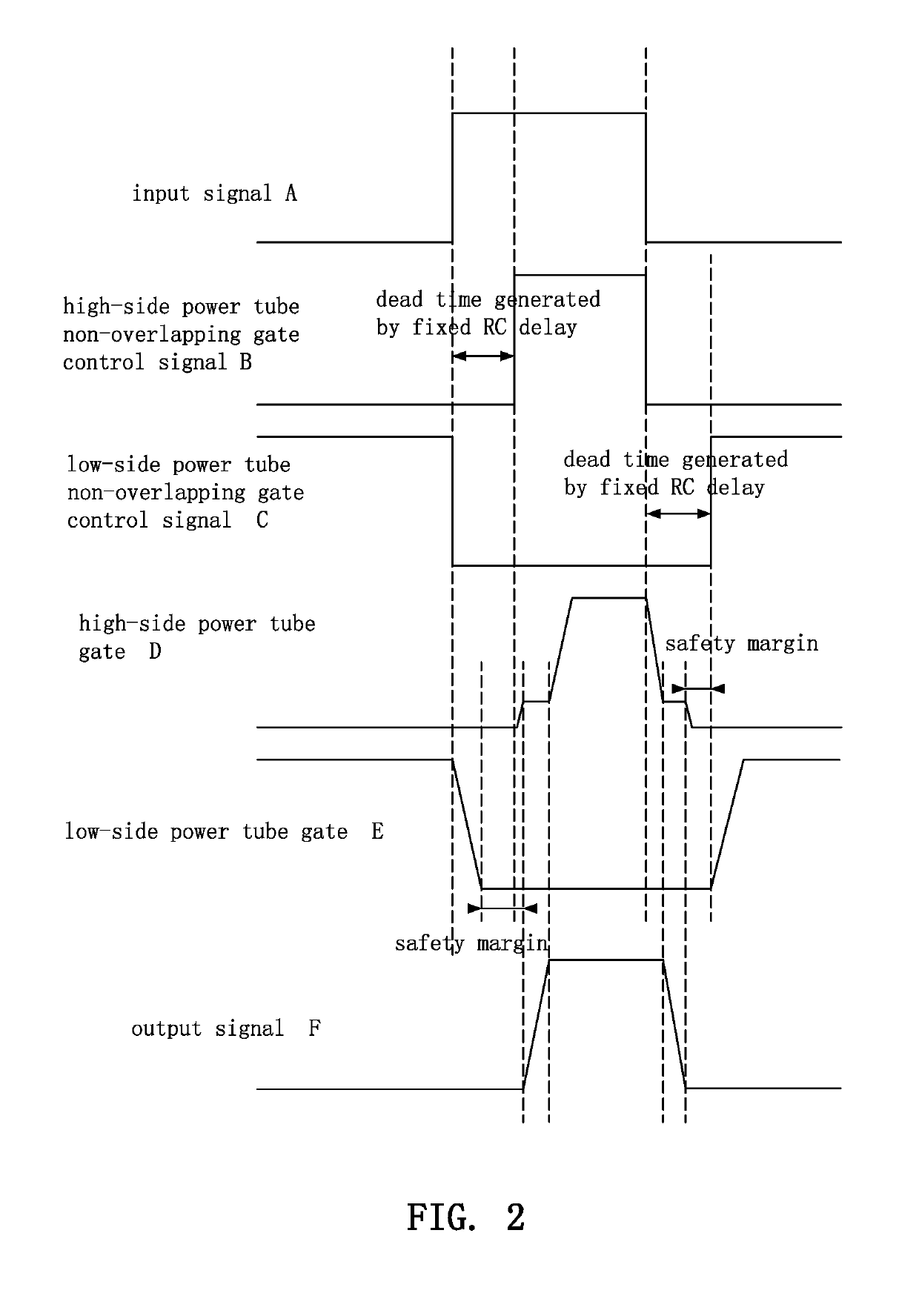Low-radiation interference, high-efficiency, high-linearity, and high-robustness power tube driver of class-d audio amplifier
a power tube driver and amplifier technology, applied in the field of audio amplifiers, can solve the problems of radiation interference sacrificing efficiency and linearity, linearity and robustness, and the use of fixed gate charge speed and rc delay to generate fixed dead time cannot meet the above four aspects very well, so as to reduce radiation interference, improve efficiency and linearity, and reduce the effect of radiation interferen
- Summary
- Abstract
- Description
- Claims
- Application Information
AI Technical Summary
Benefits of technology
Problems solved by technology
Method used
Image
Examples
Embodiment Construction
[0035]To understand the technical characteristics of this disclosure intuitively and comprehensively, exemplary embodiments are used and illustrated in referenced figures of the drawings. It is intended that the embodiments and figures disclosed herein are to be considered illustrative rather than restrictive.
[0036]With reference to FIG. 3 for a low-radiation interference, high-efficiency, high-linearity, and high-robustness power tube driver of a class-D audio amplifier in accordance with this disclosure, the power tube driver comprises a dead time generation circuit based on a gate voltage detection 1, a high-side fixed charge / discharge gate driving circuit 2, a low-side fixed charge / discharge gate driving circuit 3, a high-side gate charge / discharge accelerating circuit 4, a high-side gate voltage detection circuit 5, a low-side gate charge / discharge accelerating circuit 6, a low-side gate voltage detection circuit 7, a high-side power tube Q1, and a low-side power tube Q2.
[0037]...
PUM
 Login to View More
Login to View More Abstract
Description
Claims
Application Information
 Login to View More
Login to View More - R&D
- Intellectual Property
- Life Sciences
- Materials
- Tech Scout
- Unparalleled Data Quality
- Higher Quality Content
- 60% Fewer Hallucinations
Browse by: Latest US Patents, China's latest patents, Technical Efficacy Thesaurus, Application Domain, Technology Topic, Popular Technical Reports.
© 2025 PatSnap. All rights reserved.Legal|Privacy policy|Modern Slavery Act Transparency Statement|Sitemap|About US| Contact US: help@patsnap.com



